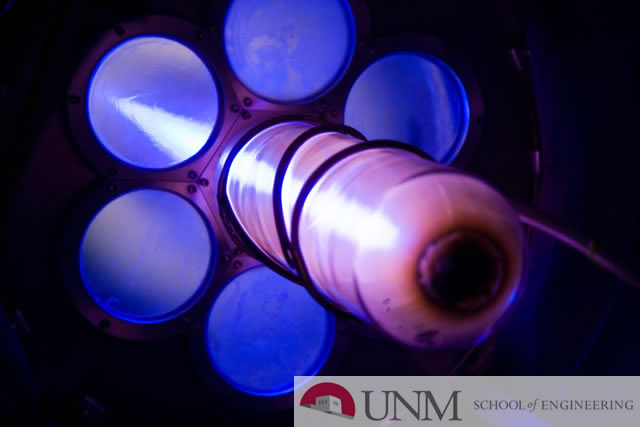
Electrical and Computer Engineering ETDs
Publication Date
8-27-2012
Abstract
The finite-difference time-domain (FDTD) technique is a very flexible and robust means to solve problems spanning a broad range of applications (defense, communication, computing, semiconductor devices and biomedicine), especially where geometrical complexities, nonlinearities and multiphysics dominate. In this thesis, novel photodetectors are developed via FDTD having sub-wavelength active areas that yield enhanced optical absorption at near-infrared (NIR) wavelengths by way of plasmonics or photonic nanojets. The response time of photodiodes is primarily limited by two factors: (1) the transit time of photo-generated carriers to the electrode and (2) depletion layer capacitance of the semiconductor. The former requires a thinner depletion layer, resulting in a large depletion layer capacitance. To suppress the increase of the depletion layer capacitance, it is necessary to decrease the active area of the photodiode with depletion layer thickness. However, the smaller the active area the lower the output of the photodiode under the constant optical power density. To overcome the trade-off between speed and responsivity, the incident light should be efficiently confined within a small active area. Surface plasmons play an important role in this phenomenon as surface plasmons can enhance the near-field when excited by a certain wavelength. Resonant surface plasmons can confine strong optical near fields in a sub wavelength volume, this has been demonstrated for near- infrared dipole antennas. As an alternative to plasmonics it is proposed here that photonic nanojets may be employed to focus light onto the small active region of a photodetector. A photonic nanojet is a narrow, high-intensity electromagnetic beam that propagates into the background medium from the shadow side surface of a plane-wave illuminated loss-less dielectric micro-cylinder or micro-sphere of diameter greater than the illuminating wavelength, λ. The transverse beam width of the nanojet can be as small as λ/3 and length can be as long as 20λ, so we can use a photonic nanojet to concentrate the energy into a small region. By using the E-field enhancement in a sub-wavelength active area provided by the photonic nanojet and comparing it with the enhancement of the plasmonic structures, we may improve the responsivity and speed of the photodetector.
Keywords
FDTD, Plasmonic, Photonic Nanojet
Document Type
Thesis
Language
English
Degree Name
Electrical Engineering
Level of Degree
Masters
Department Name
Electrical and Computer Engineering
First Committee Member (Chair)
Graham, Edward D. Jr.
Second Committee Member
Lester, Luke F.
Third Committee Member
Simpson, Jamesina J.
Fourth Committee Member
Zarkesh-Ha, Payman
Recommended Citation
Hasan, I.M. Mehdi. "FDTD Analysis of Plasmonic and Nanojet Enhanced Photodetectors for Improved Performance." (2012). https://digitalrepository.unm.edu/ece_etds/114
